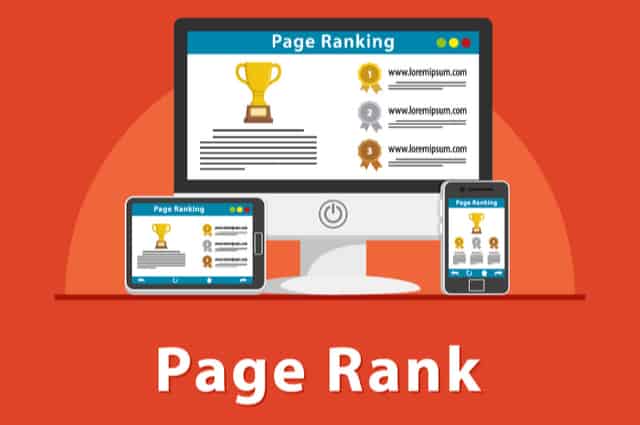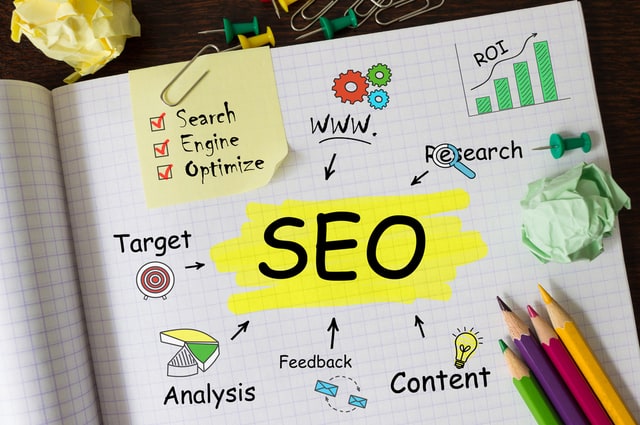Website Optimization Strategies: How to Maximize Conversions and Revenue Growth
Website optimization isn’t as simple as it was a decade earlier. Website optimization has changed over time, as have techniques that you can use to increase your site’s rank in search engines. Today, it is essential to optimize your website from head to foot.
This means that every page must be optimized. Although backlinks are important, content and On-Page SEO must also be implemented. This article will explain how to improve your website’s rating by optimizing it.
What is website optimization?
The use of modern tactics and technologies, as well as trials, to enhance the website’s performance, generate more visitors, improve conversions, and grow income is referred to as website optimization.
Search engine optimization (SEO) is an essential part of website optimization. SEO can be used to increase your website’s visibility on search engine results pages (SERPs) for specific keywords. The page that you see after entering a query in Bing, Google, or another search engine is called a search engine result page.
After a user inputs a search term, a search engine returns this page. Paid search as well as pay-per-click (PPC) advertisements frequently appear amongst organic search results on search engine results pages (SERPs).
It also allows prospects to easily find your brand. On-page optimization is another critical aspect. By offering the best customer experience, prospects can convert to leads.
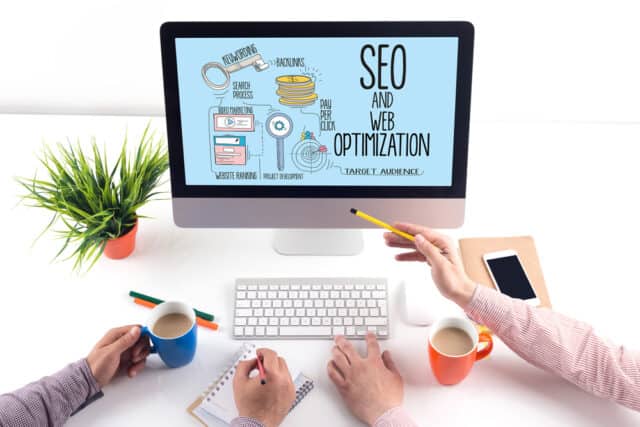
Optimizing your website can help you tap into a new market without advertising and open up doors to increased conversions and revenue growth. Although SEO is a significant aspect of website optimization, it is not the only factor to consider.
Optimizing your website to appeal to real people builds trust and a relationship. You can also offer things without having to make a sales call.
The holistic approach to website optimization combines many disciplines to ensure that your website performs optimally in all areas. Typically, the following should be included –
- Search Engine Optimization
- Content Writing
- Website Analysis
- User experience (UX) Design
- Web Development
- Landing Page Optimization / Conversion Rate Optimization
What is the significance of website optimization?
The internet has been a hub for consumers to make buying decisions and buy products over the past decade. The global eCommerce market accounted for 16.4% of all retail revenue worldwide, rising to $3.46 trillion in 2019.
The internet is also a popular destination for information about local businesses (46% of all Google searches are local in intent, and 78% result in offline sales).
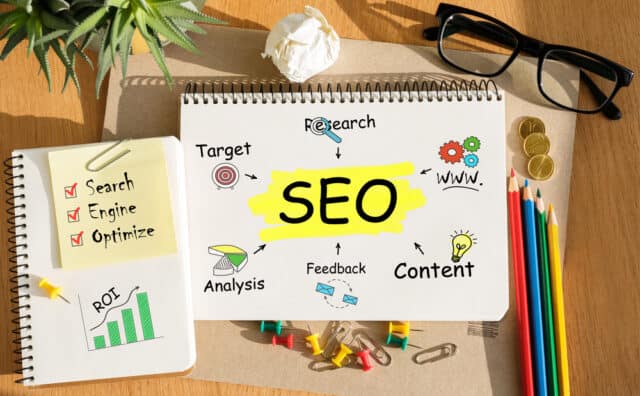
In all industries, the internet is replacing the “asking for a friend” role. By positioning your company correctly, you can turn people who have never heard of it into customers. It doesn’t really matter how people search for keywords related to your company if your site isn’t optimized. Your website won’t appear in search results. Nobody will notice your website or business.
Search engine optimization will place your business on the map. Your website and business will be found by consumers searching for the relevant terms.
By exploring Search Engine Optimization, you can get focused traffic from buyers who are interested in your goods.
Just optimizing for search isn’t enough. If your website’s traffic is only growing, and the content of your site doesn’t appeal enough to potential customers, no one will convert. Your website’s visitors may leave before making a transaction.
Optimizing the user experience and efficiency in your conversion funnels is essential to make the most of traffic.
CRO (Conversion Rate Optimization) is a strategy for increasing the number of leads or sales generated by paid and organic traffic.
How do you optimize a website?
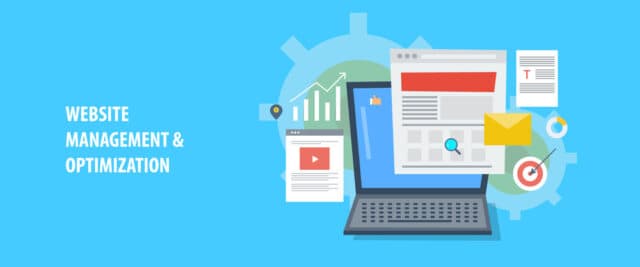
Optimizing a website has two purposes: to make it as appealing to humans and search engines as possible. How do you achieve this?
Identifying problems is the first step in making a website better. Before you can enhance your site, you must first determine the challenges. Any excellent optimization starts with this.
It is not enough to brainstorm possible issues with your team. It’s not possible to have experience or the bandwidth to cover all areas. You should use the appropriate software tools to look for SEO, user experience, bounce rates, page speed, or mobile usability issues. This will give you a meaningful set of problems to work upon.
You should also test the usability and functionality of your site using unaffiliated users. You will have a roadmap that can be used to coordinate optimization efforts between different teams. Website managers can work to improve the structure of the site, as well as on-page SEO concerns and content. Designers can enhance the user experience and look and feel of your website.
Essential website optimization strategies
You have many options for improving your website. Over 3 million results were returned only from a search for the term “improve website.” There is so much information out there that it can be hard to find the right spot.
This article will assist you in understanding the fundamentals of website optimization and maximizing your return on investment. We’ve listed several strategies to optimize your website across all areas.
1. Mobile optimization
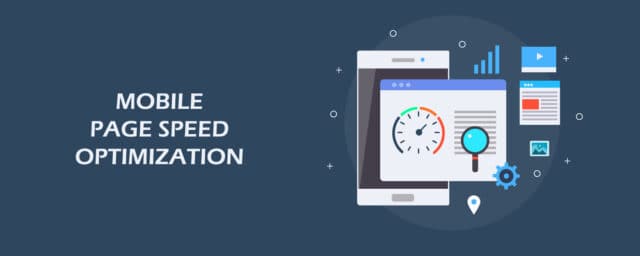
It is no longer sufficient to have a website that works well on both desktop and laptop computers. If you want to flourish in the internet market, you should also concentrate on smartphone user experience. Smartphones are now the most popular platform for Google search.
Because of mobile-first indexing, Google prioritizes ranking and indexing mobile pages first. Any issues could result in you losing mobile conversions and the chance to rank high for relevant search terms.
Your website should be ‘mobile responsive.’
The first thing to do is run a basic usability test on your mobile device, such as Google’s Mobile-Friendly Test. Any apparent issues found during the test should be corrected.
To ensure that the pages fit correctly on each screen size, you should also test them.
The device toolbar for Chrome Developer Tools makes this possible. This allows you to display your website in different screen sizes. Take the procedures required to overcome any difficulties.
Mobile users need to have a pleasant experience on your site. This is something you should ensure:
- Mobile doesn’t support interstitials.
- The site loads fast and correctly.
- It is simple to read.
- All content is accessible.
- Images and graphics that have been scaled down are still legible.
- It is simple to navigate the site.
Search engines and users alike will be grateful if you have covered these basics.
2. Improved page speed
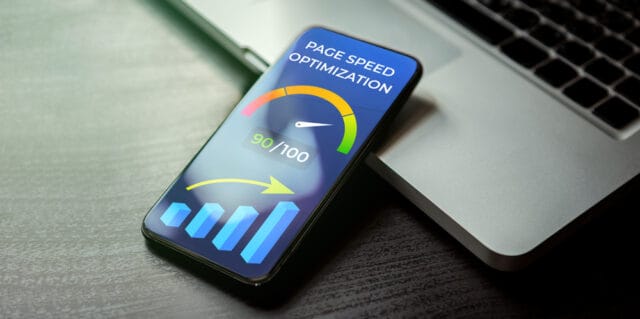
People don’t want to wait for websites to load. A load time of 5 seconds leads to a 38% bounce rate. If the process takes longer, the bounce rate will increase. A fast-loading website is the foundation of a good customer experience.
Google considers page speed a ranking factor. This can make a big difference in how your website ranks in search engines.
You can use an online tool such as Google’s Pagespeed Insights to determine how fast your website is and identify any bottlenecks or issues. They will assess your website and count and categorize HTTP requests. Then, it will highlight the areas that need fixing.
Uncompressed JS, CSS, and HTML files are common problems. On CMS-powered sites, there is just no CDN, zero page caching, and sizable, unoptimized image formats.
You can quickly fix compression and caching issues, as well as a lack of CDN with plugins and extensions for your CMS. Image compression software can optimize images.
Although it might require a substantial investment of time and money, every second you save is well worth it.
Slow page loading can be caused by low-quality, cheap shared hosting plans. If your page loads slowly after reaching a page speed score of 90+ on Page Speed Tools, it is time to upgrade to a higher plan.
3. To increase page speed significantly, use a CDN
Hosting all media files and scripts through a Content Delivery Network is another way to offset the image load. The content delivery network is a worldwide collection of data centers.
It will send your file to the visitor closest to their location. It can be used to speed up loading times as the distance that the data must travel is much shorter.
Cloudflare is a popular option, as well as Amazon CloudFront.
4. Search engine optimization

Search engine optimization is one of the most potent internet marketing strategies. 70% of marketers consider SEO more efficient than PPC. It’s more than a traffic generator.
Pay-per-click (or) advertising is an online marketing strategy that charges advertisers a fee for each click on their ads.
People are more inclined to believe organic search results than ads. Google will sign you up as a cosigner if you have quality content that is relevant to the search query.
You must first ensure that Google correctly indexes all of your pages and that there are no obvious SEO mistakes. Signing up with Google Search Console and registering your website is a wonderful place to start.
This will assist you in identifying the most critical issues as well as providing a list of all the pages that have been indexed. You can also track which keywords rank well.
After you’ve learned the fundamentals, you can graduate to third-party technological tools and advanced skills and techniques.
SEO is one of the most powerful marketing strategies. SEO is more than just a traffic generator. People are more inclined to believe organic search results than ads.
5. Convert more visitors to your website by tailoring the copy
Your website’s words matter more than you might think. While design, usability, page speed, and usability are all critical factors, words are what control your message. Although words can be the easiest to change, they are also the most powerful.
Don’t rush to finish your content. The copy should be clear and concise. This requires you to not only understand essential website copywriting methods but also your customer base. You can’t make a journey that guides people to their destination if you don’t get the visitors’ problems, wants, and doubts.
Understand the customer journey and converse with existing customers about their doubts, as well as what made them buy, analyze heatmaps.
Once you have identified the weak areas of your website’s copy, you can test and create different copy variations based upon what you know about your customers.
6. Multivariate and A/B Testing
A/B Testing is the most effective method of putting your answers to the challenge in the actual world. Let’s take, for example, a landing page with a low conversion rate. Your team believes that the copy may be the problem. You can quickly develop more powerful headlines or components and put them to trial in a head-to-head comparison.
If you see statistically significant increases in conversions with the new version, it means that your theory is correct and you have solved the problem.
Even if your latest version fails, it doesn’t imply that you haven’t identified the issue. It’s possible that you haven’t reached the correct solution yet.
Multivariate Testing, which involves testing many solutions at the same time, is a fantastic idea. You’re more likely than not to see a significant improvement if you compare the original with multiple versions at once.
Single-page Testing can be used to improve your website’s functionality.
7. Optimizing user experience
Small business owners and eCommerce entrepreneurs often neglect the overall user experience of their websites. They focus too much on SEO and CRO but neglect to improve the user experience of their website. A more pleasant and seamless interaction can make a huge difference.
You can think of it this way: Creating a better user experience will help you retain more visitors. They return to your site repeatedly, and they are more likely to follow your funnel and become customers.
In addition, Google’s dwell time (the period of time a Google user stays on your website before leaving) is a significant SEO ranking element.
You wish to do UX evaluations and evaluate user data, including user flow, exit pages, session recordings, and heatmaps. This will allow you to identify UX issues and generate solutions. After you have created a new page, you can either compare it to the original using an A/B test, or you can do benchmark usability testing with a group.
8. Before uploading your images, optimize them
Images are the heaviest part of any website, so they can have a significant impact on loading times. Optimize your files before uploading them to avoid any potential problems.
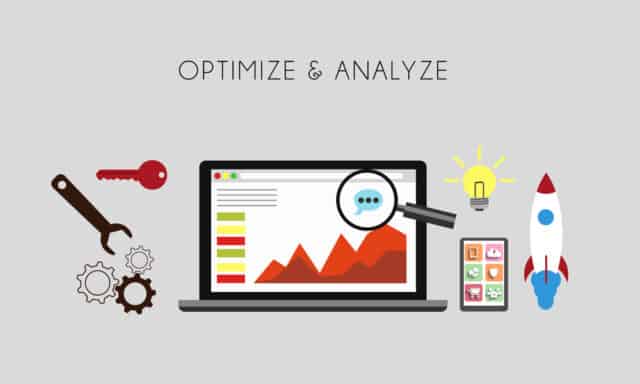
Also, it is better to combine background images into one picture than to use small icons on your landing pages. As an outcome, the number of HTTP requests generated by graphic elements on your website will be minimized.
CSS sprites can only be used to display only a portion of a larger image on your webpage.
9. Not just for search engines, but for people as well
People make mistakes when they get into SEO and start using content analysis tools. They focus on SEO and not their readers.

Your content must serve a purpose, offer real value, and not just reach a goal of total word count and semantically related words. High bounce rates can cause a decline in both your Google rankings as well as your conversion rates.
What is Content Optimization?
Content optimization, in its simplest form, is the process of optimizing text to achieve its intended goals. This could be ranking high on search engines or turning leads into sales.
To achieve these objectives, you can employ a variety of simple and tried-and-true ways.
But it’s not only about doing technical tasks and ticking boxes. Web content optimization includes important marketing and editorial aspects that must be addressed.
Why is Content Optimization Important?
Let’s assume you have a top-of-the-funnel blog post about your core product. You want it to be seen by as many people as possible. You examine your past 2 to 3 months’ performance after it was released and discover that no one has seen it.
Why? perhaps:
- the terms you’ve chosen don’t have a lot of searches.
- Google bots have trouble understanding your article because you don’t have a consistent heading structure.
- Your title tag may not accurately reflect the content of your article;
- You haven’t given the topic enough detail, especially compared to your peers.
- Your content might be lost to Google if it isn’t optimized.
Imagine writing a detailed guide that explains how businesses can benefit from your product. This content can be used in the middle of your content channel and could possibly convince leads to make a purchase.
You have not included any CTAs, and this piece is geared towards junior marketers rather than decision-makers. Analyzing your user journey might reveal that many of your leads abandon your funnel entirely after this point.
These are only two examples of why optimizing content is so crucial. Even though you might be the best writer globally, your article may not have the most valuable insights or helpful advice. It’s feasible to produce the best post globally, chock-full of original ideas and practical suggestions, but search engines will overlook it. It could also be irrelevant to your content marketing objectives.
We offer a few pointers to save you from committing this error. The content optimization process has been broken down into three sections.
SEO;
Backlinks and shares
Conversions.
What exactly does keyword optimization imply?
Keyword optimization ensures that your chosen keywords drive the right traffic to the site. It also aids in obtaining a high enough ranking for your site so that the relevant traffic may easily reach it. According to the keywords, search engine algorithms should be able to figure out what your webpage is all about.
Keywords should also indicate which search queries should return as the top result.
Some content may require ongoing keyword optimization. The combination of keywords used to optimize your search status can change as search terms become more popular and new articles and content are added. It’s probable that you’ll have to come up with new keywords. It is an ongoing process.
What are the most effective methods for optimizing keywords for SEO?
Optimizing for keywords might be difficult. The process of optimizing for keywords can feel confusing if you are new to SEO. This is a method of locating keywords that will help your content show up in relevant user queries. How can you find the right keywords?
This task is not the same for all bloggers or content writers. Some might choose to use Google Analytics or Google AdWords, which are free tools.
Another tool, Semrush’s Keyword Research Toolkit, can help you plan your keywords more effectively.
The Keyword Magic Tool generates a comprehensive list depending on the keywords for which you wish to rank. This allows you to access a wide range of keywords.
SEO tools will show you metrics related to different keywords and similar keywords. This allows you to narrow your options effectively and locate the best target keywords for every piece of content.
What is SEO Optimization?
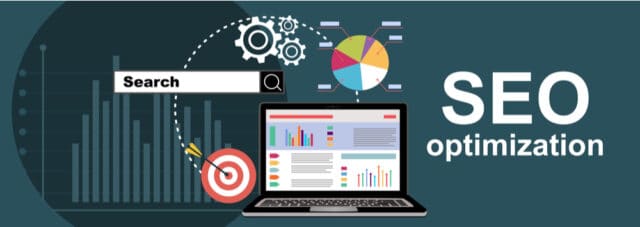
SEO is a way to boost the visibility and reachability of your website or blog. SEO entails more than merely placing keywords on your website and hoping for a miracle. Many factors influence how well a web page ranks in search results, including backlinks and content quality.
SEO optimization involves a mix of both on-page and offline SEO techniques that will help you rank higher in Google and Yahoo.
You can improve your search engine rankings by optimizing your title tags, meta descriptions, alt text, internal linking structures, and other factors. There are two components to SEO optimization: Off-Page and On-Page.
What are On-Page and Off-Page SEO?
The process of optimization of web pages for search engines and visitors is known as on-page SEO, or “on-site SEO.” On-page SEO aims to increase the visibility of your website in SERPs.
This includes optimizing titles and descriptions, making sure your website contains relevant content, and usage of keywords in URLs.
All operations performed beyond your website are referred to as off-page SEO. These include guest blogging, press releases, and SMM (social media marketing).
Backlinks, blog comments, as well as forums are all examples. Most people don’t think they need off-page SEO. They’re wrong! It’s not something you can ignore. It’s one of the most effective ways to increase organic traffic.
Most of the time, digital content optimization is about making your material prominent in search engines. Here are some ideas for making your material, website or blog stand out.
1. Choose the appropriate topic and keyword
Your target keyword will be the foundation of all your content pieces. Before you can prepare and write your piece, identify it. Google now pays more attention to the way you cover the topic. This means you should also consider related keywords and related queries. Keywords are search queries that people use separately, but topics connect the semantic relationships between them.
Keyword research entails more than just finding relevant terms or phrases for your service or brand. You need to consider the suitability and intent of the keyword, as well as the authority and size of your brand.
The keyword magic tool from Semrush helps you to produce keyword suggestions based on both volumes of traffic and complexity.
This can help you avoid competing for difficult keywords if you are in a smaller domain.
2. Search for semantically related keywords
To improve your odds of ranking, incorporate keywords that are semantically connected to your target term. Your content will be easily understood by search engines.
It is critical, however, that you stay faithful to the original aim of your post. If you create an article about a long-tail keyword like “how to ride skateboards,” you can include semantically related keywords such as “bending your knees” and “shifting your body weight,” but “the best beginner skating boards” — although topically related — is entirely different search intent.
SEO Content Template will help you quickly and easily locate such keywords in your content. This is based on keywords used by the top 10 organic search competitors for the selected keywords. The SEO Writing Assistance tool can be used to verify their presence in your actual copy.
3. Establish Your Structure
It’s crucial to outline the structure of your article once you have identified your keywords. The Topic Research Tool makes this work more accessible. Depending on your initial seed term, it allows you to access relevant queries for every topic. This will help you to determine the types of items that you need to cover and help you build a structure.
You can also list ideas using “Topic Efficiency,” which allows you to identify topics with a high traffic volume but is easier to rank for.
4. Manage Keyword Density
Many SEO and content strategists are familiar with keyword stuffing which was formerly a common strategy. Although this tactic is long gone, it’s still important to monitor your keyword density. Utilize SEO Writing Assistance tools to get notifications if you overuse your keywords.
5. Visuals
Visuals have been proven to increase visitor engagement with content. This means that visitors will spend more time on your site and pay more attention to what you have to offer.
According to a Semrush survey, posts that contain at least one photo get twice the traffic as those with text alone. They also earn a 30% increase in shares and a 25% increase in backlinks. The same is true for video posts.
Pure text articles receive 92% less traffic and 24% fewer share than posts with videos. If you don’t include photos, graphics, infographics, charts, and GIFs in your posts, then you are missing a great opportunity. You will be notified by the SEO Content Template if video content is highly recommended for your keyword.
6. Interlink
Because search engines can find and rank pages faster, internal linking is one of the most essential SEO elements. It allows search bots to identify pages and pass authority on to them. This allows humans to navigate your website more efficiently, which increases engagement.
Semrush’s site audit tool can help you strengthen your internal link structure and to identify content that needs improvement.
7. Topic in Depth
To rank, your material must be relevant, particularly for competitive keywords. To understand what this means, you should research the content of your competitors and what your customers want to know.
The goal is to optimize your piece by learning from what other competitors rank for. This can be done by adding expert insights, graphics, and/or first-party stats to your website.
Even if you’re writing about the same subject as your competitors, you want your post to be more credible and helpful than theirs, not just a rehash of their arguments.
Listen closely to the questions that people have about your topic. Topic Research can help you gain a better understanding of the questions people have about the topic. Also, make sure to include subtopics that your competition may ignore.
The SEO Content Template tool can be used to quickly gain a better understanding of the top 10 results for keywords. This tool allows you to view the average length of your competitors’ text and their readability scores. It also suggests relevant keywords and domains you should target to get backlinks.
8. Take a look at the Technical Elements
SEO’s technical aspects are an essential part of optimization and should not be ignored. Even though your content may be flawless, if it takes too long to load or if the structure isn’t consistent, you will have problems.
Page features such as UX and page performance should be given special consideration. The Site Audit tool can be used to evaluate these indicators, which Google refers to as Core Web Vitals. You must organize all meta tags.
9. Keep your content current
Don’t forget to include your existing content after it’s been published. Remember point 7? This is especially important if you write about a topic that changes quickly, such as SEO or content optimization. It’s worth changing your title so that your content provides the most current and relevant information like“Best Email Validation Tools in 2022.”
This process can be automated by using the Content Audit Tool. This allows you to identify articles that should be rewritten, removed, or updated. Ensure that your posts are current and accurate. Also, update them with relevant links whenever you create new content.
Optimizing Content to Convert
You should include a conversion path in every item of material you distribute. This could be product links or material at the very top of the funnel. For each post, it’s critical to understand wherein your target reader is on the conversion route. As a result, you need to give particular attention to 3 crucial elements.
Your Target Audience
It is essential pitching your content to the right audience, as we touched on at the beginning of this article. For example, if you’re a B2B advertising agency, your content should target decision-makers such as marketing heads. This requires that you use the language and terminology your audience is familiar with and have a good understanding of their pain points and challenges.
Your Call to Action
The most critical aspect of content is the call to action (CTA). This is particularly true if the content’s objective is to persuade readers to act. You must ensure that your CTA is not only well-placed well-designed but also in line with your content goals.
When building your CTA, it’s critical to understand where your visitors are on their user journey. If you send an email about a new product and it is to subscribers who have subscribed from your ToFu blog post, then the majority might not yet be in the purchasing decision stage. The apex of the funnel is known as ToFu.
If you send an eBook or a Case Study to your users, they are more likely to click on it and engage. This allows you to nurture them rather than “scaring them away.”
Your writing style
Conversions are a crucial focus of copywriting. You need to be persuasive but not too assertive when approaching your task. Conversion copywriting is a tricky balancing act.
This method will help you be precise about the actions that your reader should take. It’s critical to comprehend your target audience and how they communicate with you. Make an attempt to complete the following tasks:
Make your copy effective
Use bullet points, lists, comparison tables, and numbers to grab your audience’s attention and make it easier for them to understand essential information.
Give heed to the reader’s requirements, not your own
It’s never a bad idea to speak about how fantastic your product is. Readers, on the other hand, want to understand if and how it resolves their issue. Consider a product’s advantages rather than its characteristics.
Punctuate effectively
It is essential to use punctuation in copy-writing. You can also use it to emphasize tone and intent (although you should not use too many exclamation marks).
Use relevant adjectives
Although you don’t need to call every noun in your copy “amazing” or “awesome,” a well-placed adjective can make an essential difference in the reader’s perception.
Keep it conversational, not sales
Talk to people, not at them in your copy. In many circumstances, speaking in the first person and using an informal tone is acceptable. The former is more like a conversation with your readers, while the latter sounds like a sales pitch.
Conclusion
Over the last few years, Website Optimization has evolved significantly. We need to keep up with this change if we are to be successful. If you have a basic understanding of SEO, now is the time to be proactive and take action.
Website optimization is as important as any design element when building a website. Good on-page SEO practices can help improve your Page Rank in SERPs. Higher SERPs rankings will result in more traffic and thus more sales.
Content optimization is an integral part of any content marketing strategy. It maximizes your chances of ranking for relevant keywords, establishing brand authority, and converting leads into paying consumers.
This is a significant component. Keep in mind that you’re writing for humans, not search engine bots. Also, apply the information you learn from competitor analysis and research.
Implementing the website optimization strategies discussed in this article can help you achieve higher ranking. SEO is not about using special techniques or secrets. Building solid foundations and excellent materials that others may want to connect to is what SEO is all about.
Subscribe to our Newsletter
Sign up to receive email updates on new product announcements, exclusive sales and marketing content, special offers on email validation plans, and more.
We send curated content as per your preference and do not indulge in spam!
What would you like to know about
We’re committed to your privacy. TuxMailer uses the information you provide to us to contact you about our relevant content, products, and services. You may unsubscribe from these communications at any time. For more information, check out our privacy policy.
